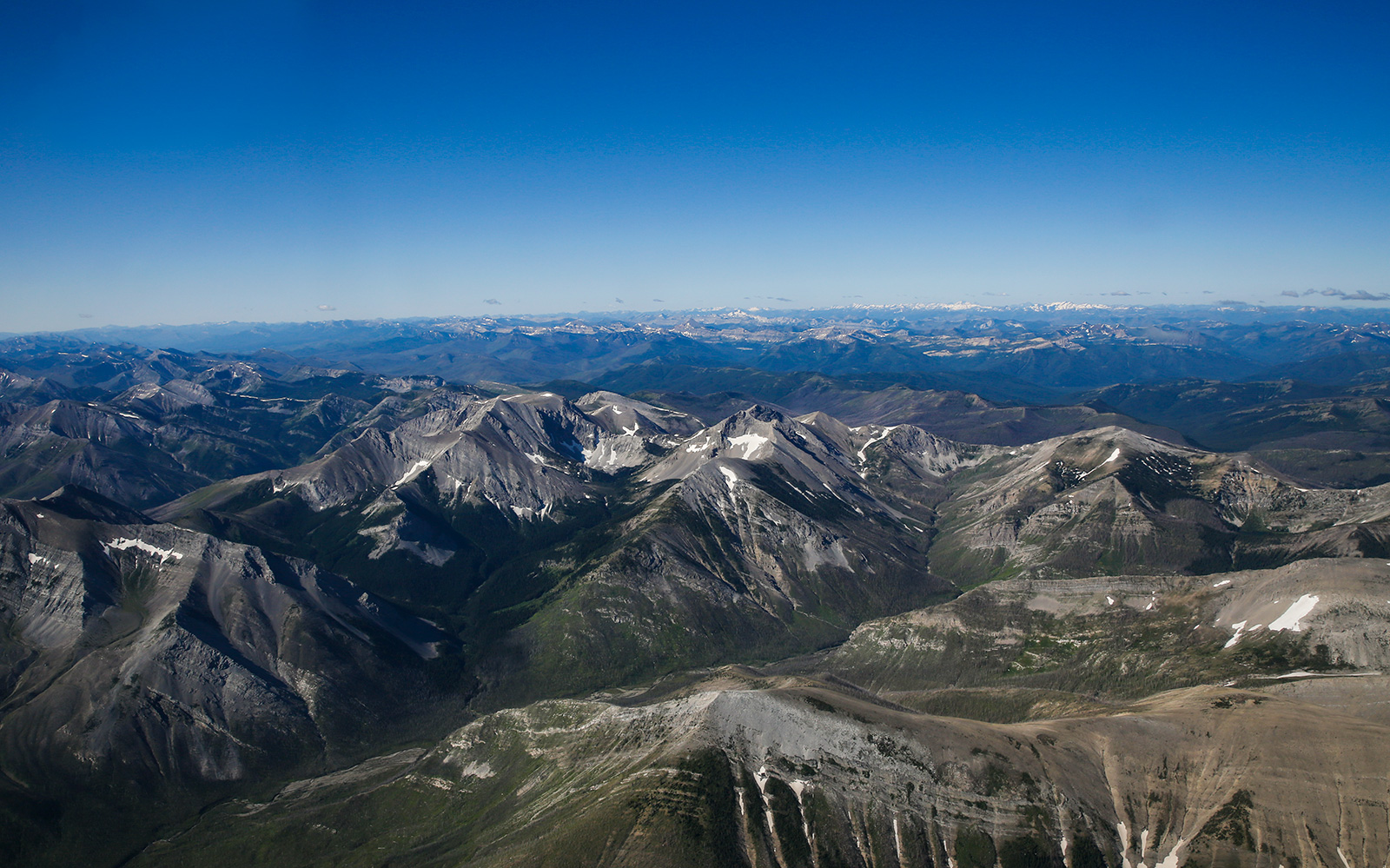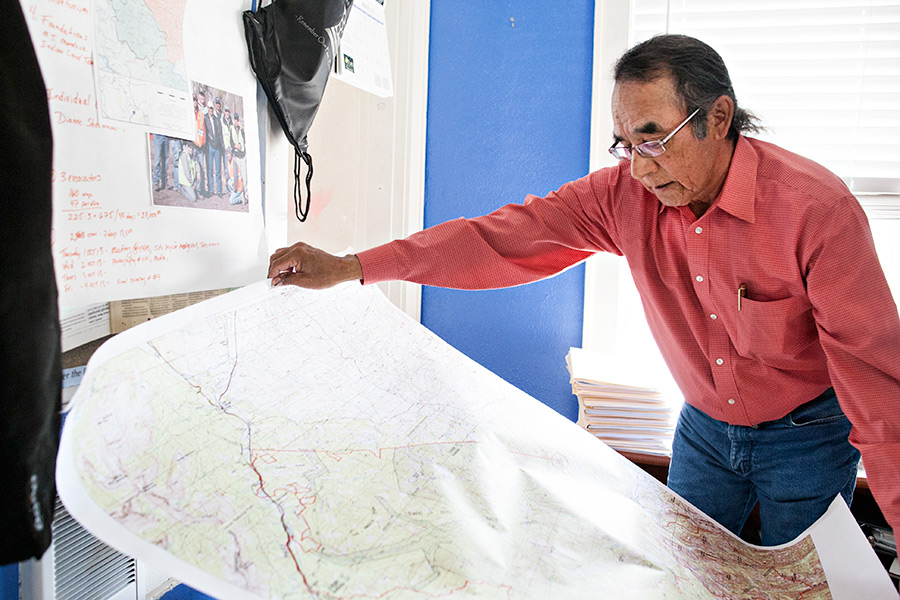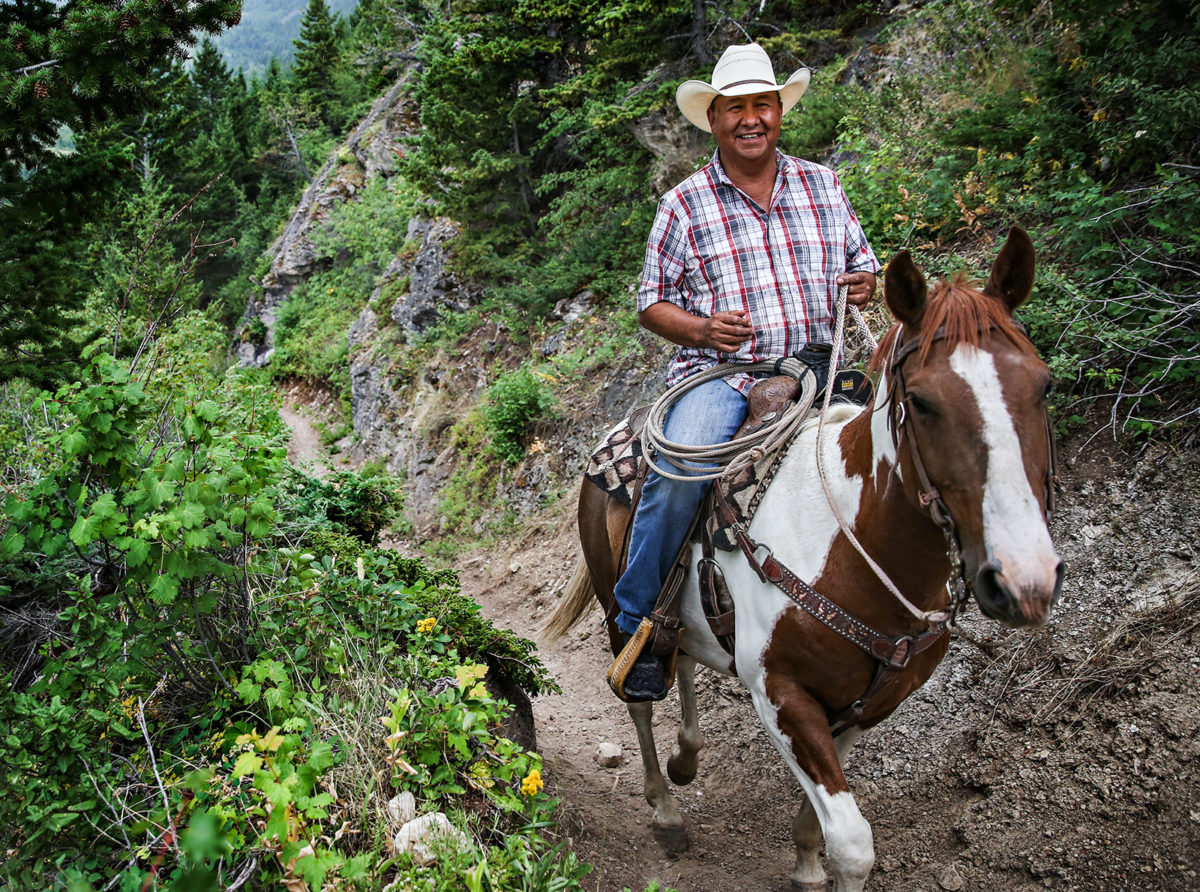With Last Lease Laid to Rest, Blackfeet End 40-year Fight to Halt Drilling on Badger-Two Medicine
Under a settlement agreement reached Friday, the Louisiana company Solenex relinquished the only remaining oil and gas lease on land sacred to Blackfeet traditionalists
By Tristan Scott
For John Murray, the only thing more sacred and enduring than his tribe’s 49-year fight to cancel drilling rights in the Badger-Two Medicine region is his 50-year marriage to his wife, Carol.
On Friday, both interests were competing for his attention.
As the tribal historic preservation officer for the Blackfeet Nation, Murray’s been a leading force in the efforts to protect its cultural values on a landscape that includes Glacier National Park and the Bob Marshall Wilderness Complex. Indeed, his work to prevent oil and gas development on that sacred swatch of land stretches back to when the U.S. Department of Interior auctioned off much of the Badger-Two Medicine to oil and gas developers for a dollar an acre, doing so without the Tribe’s approval.
So, on Sept. 1, when Murray’s golden wedding anniversary coincided with a monumental settlement agreement to retire the last remaining oil and gas lease on the Badger, he didn’t know which milestone to celebrate first.
“I think we’ll spend the weekend as a family just basking in the glory of victory and giving thanks to the hundreds of good people who made this happen,” Murray said in a phone interview with the Beacon Friday afternoon, after news of the settlement agreement spread across Indian Country. “It’s been a long, long road, but the relinquishment of the lease was signed so it’s legal. It’s done. It’s over. We don’t gotta worry about that anymore.”

Blackfeet leaders, conservationists, elected leaders and federal government officials hailed the decision as a watershed moment for the ancestral homelands of the Pikuni people as well as for environmental stewardship in the Crown of the Continent.
Located adjacent to the Blackfeet Indian Reservation, the Badger-Two Medicine area is considered sacred ground by the Blackfeet Nation due to its deep cultural and historical significance. It also serves as vital habitat and a migration corridor for some of Montana’s most treasured wildlife species, including elk, wolverines, grizzly bears, and westslope cutthroat trout.
Signaling a departure from the federal government’s past policies surrounding land use on Native American reservations, the Interior Department announced Friday that it had reached a legal agreement with Louisiana-based Solenex, LLC, to permanently retire the last remaining federal oil and gas lease in the 130,000-acre Badger-Two Medicine area of the Helena-Lewis and Clark National Forest.
“The Badger-Two Medicine area continues to have cultural and religious significance to the Blackfeet Nation, which has stewarded that land since time immemorial. Oil and gas development would have had irreparable impacts on these sacred homelands. Today’s action closes the chapter on development threats to this special place and recognizes the importance of protecting these lands for future generations,” Secretary of the Interior Deb Haaland said in a prepared statement. “The Biden-Harris administration is committed to working with Tribes to protect Indigenous homelands and ensure the preservation of their natural and cultural resources.”
The 6,247-acre lease held by Solenex was one of 47 oil and gas leases originally issued in the Badger-Two Medicine by the Reagan Administration. The lease was canceled in 2016 under then-U.S. Interior Secretary Sally Jewell, a decision upheld by a federal appeals court in 2020. Last September, however, U.S. District Judge Richard Leon issued a ruling in response to a lawsuit brought by Solenex, a decision that overturned the Interior’s cancellation. In his ruling, Leon chastened the federal agencies that first approved the lease in 1982 for setting off “a never-ending series of administrative reviews [that] have precluded any activity for nearly forty years.”
David McDonald, an attorney representing Solenex through the Mountain States Legal Foundation, which argues cases on property rights and federal land management across the West, wrote in an email to the Beacon that “we see this as an extremely favorable outcome.”
“The settlement leaves in place Judge Leon’s excellent district court opinion, enshrining the legal principles we fought for in court precedent, and provides for significant compensation for our clients,” McDonald stated.
Reflecting on Friday’s settlement agreement eliminating the last remaining lease, Blackfeet leaders said it enshrines a legacy of stewardship that would make their ancestors proud.
“Hearing this great news, my first thoughts were of all those Blackfeet individuals that did not live to see this day,” Murray said.
Terry Tatsey, a former natural resource studies professor at the Blackfeet Community College in Browning, said the lease cancellation helps ensure “that our connection to this landscape never ends.” Indeed, Tatsey recalled how in the 1990s he guided young Blackfeet men and women on camping and hunting trips in the Badger-Two Medicine, with the goal of passing on traditional skills and creation stories that emanate from the Badger-Two Medicine.
“If our young people choose to be practitioners of Blackfeet culture and use the land like we have always historically used it, they are going to see an intact ecosystem that has always been there and will hopefully be there forever,” Tatsey said Friday. “That’s going to be a big benefit for future generations. They are going to see things the same was as we saw it.”

Echoing Murray’s sentiments, Tatsey said Blackfeet elders have warned of threats against the Badger-Two Medicine for as long has he can remember.
“To hear that this is actually happening, it just makes my heart feel really good,” Tatsey said. “Most of our elders who started this have long since passed, but theyare probably proud that so many of us took on the fight and we didn’t quit because that’s the way of our ancestors. You don’t give up. And we built the right alliances and partnersto accomplish this.”
Among those partners are a host of conservation groups, including the Blackfeet Headwaters Alliance, Glacier-Two Medicine Alliance, National Parks Conservation Association, Pikuni Traditionalist Association, The Wilderness Society, and Wild Montana, all of whom jointly intervened in the case against Solenex to defend the government’s cancellation decision, represented by the nonprofit public interest organization Earthjustice.
“The key thing that we have always been trying to achieve with our partners was to ensure that the Badger-Two Medicine was protected from oil and gas development,” Earthjustice attorney Tim Preso said. “It’s been a long journey. When we started there were 18 oil and gas leases that stood in the way and through an amazing coalition-led effort of diverse interests spanning many years, but today we arrived at an agreement to retire the last lease and that is a huge progression in this world where we are often so polarized that it’s impossible to accomplish anything.”

Peter Metcalf of the Glacier-Two Medicine Alliance, a community-based conservation group situated on the edge of the Badger-Two Medicine in East Glacier Park, said the fight to preserve the Badger has been his guiding star and the central goal of his organization.
“How often does a small organization like this get founded to achieve a specific goal and see it through over so many years and accomplish it?” Metcalf told the Beacon in a phone interview. “That is what we have done today and it’s been a journey of many hills and many setbacks, but we can finally say that there will be no drilling today, there will be no drilling tomorrow, and there will be no drilling forever into the future.”
Michael Jamison, of the National Parks Conservation Association, said the significance of Friday’s agreement goes far beyond the protection of the Badger-Two Medicine.
“It shows the importance of respecting tribal rights, cultural practices and sacred land. It facilitates wildlife movement to and from adjacent protected areas like Glacier National Park and the Bob Marshall Wilderness,” Jamison said. “And it demonstrates what is still possible when we come together as Montanans — Native and non-Native, conservationists, hunters, anglers, ranchers, business owners — to stand up for what we value in this state: our wildlife, our public lands, our communities, and our outdoor heritage.”